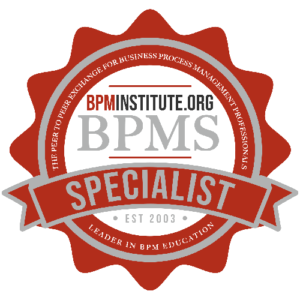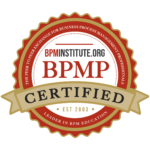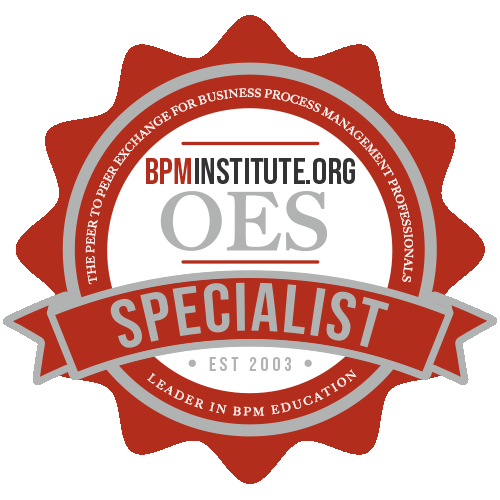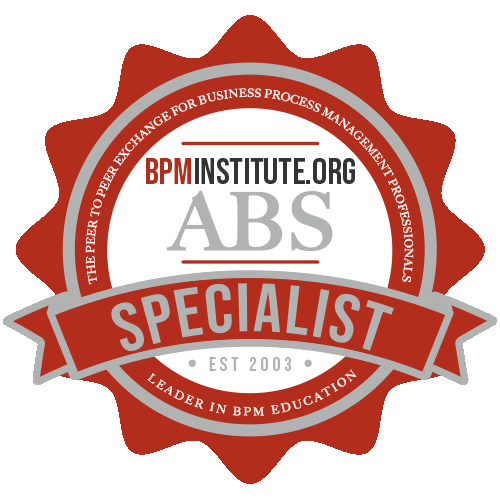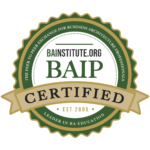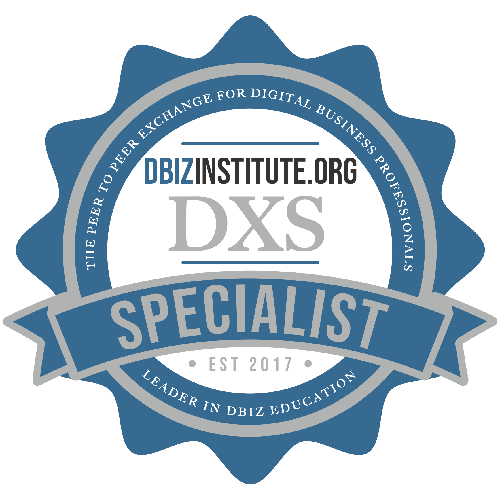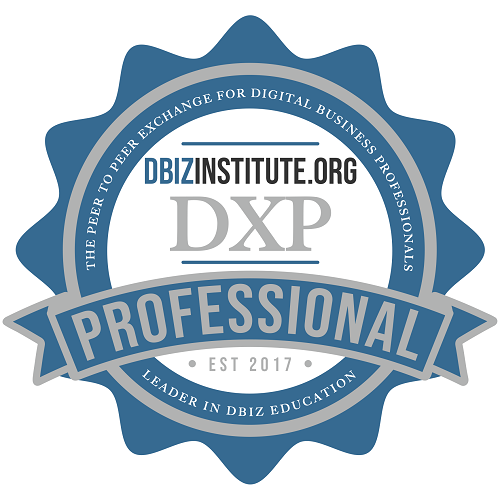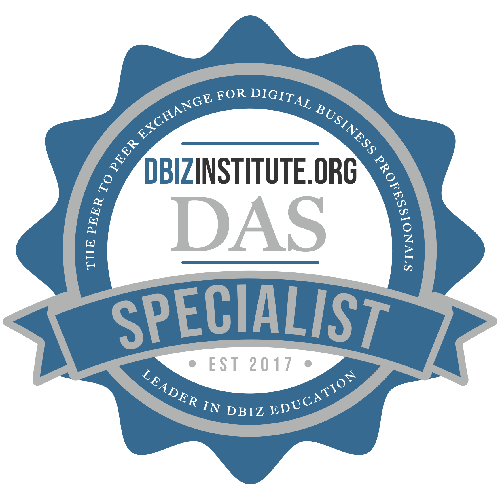Home / Resources
Resources
Discover a Wealth of BPM Knowledge and Expertise at BPMInstitute.org!
Déjà Vu! From Project to Process Portfolio Management
The evolution of the BPM profession is leaving a strong impression of “Déjà vu”! Although less mature, the evolution of the Process Management discipline is comparable to that of the Project Management discipline.
BPM has the golden opportunity to develop more rapidly by leveraging the experience of its’ predecessor.

The Technology of Business Decision Management
In previous articles I introduced Business Decision Management (BDM), answered some of the most frequently asked questions about it and discussed operational business decisions. BDM involves the automation of operational business decisions and this leads us to the topic of this article – what technology do you need (and can you use) to implement BDM?
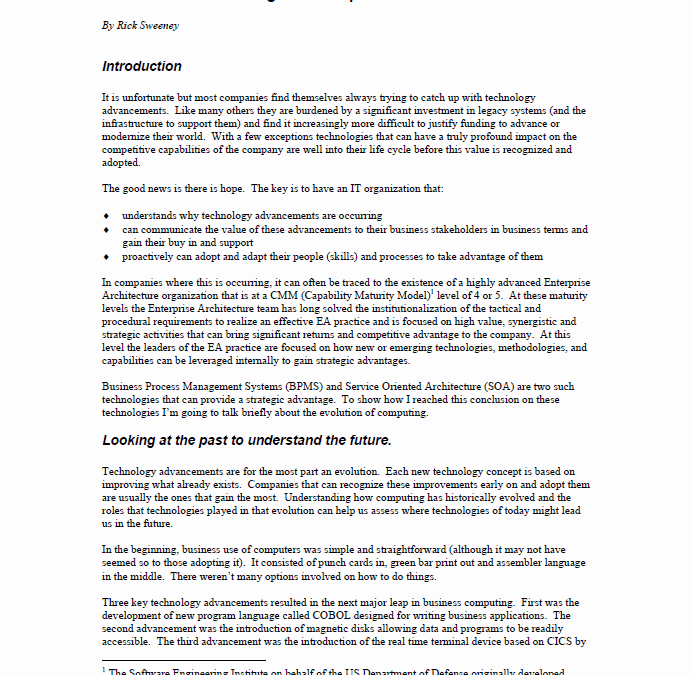
SOA and BPM – Taking the Enterprise to the Next Level
It is unfortunate but most companies find themselves always trying to catch up with technology advancements. Like many others they are burdened by a significant investment in legacy systems (and the infrastructure to support them) and find it increasingly more difficult to justify funding to advance or modernize their world.
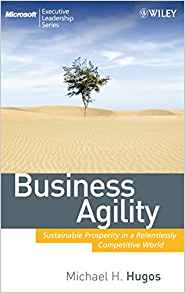
Business Agility: Sustainable Prosperity in a Relentlessly Competitive World
Our interconnected world economy behaves like a huge stock market, and the volatility that comes with this makes the traditional business focus on efficiency less effective because it requires a level of predictability that no longer exists. In our high change, real-time economy responsiveness trumps efficiency. The profits from responsiveness are the basis for sustainable prosperity in this century.
Agile and responsive organizations are structured as networks of autonomous business units that harness the power of three self-adjusting feedback loops to respond appropriately as conditions change and new opportunities arise.

What Business Architecture tells you that you don’t already know
Every executive and business unit leader has a strategy, formal or informal. Every business unit and IT organization has a set of initiatives designed to achieve some objective. And every initiative was funded based on anything from a formal business case to informal common sense. Most of these initiatives are launched without the benefit of business architecture and some of these initiatives actually succeed in meeting their respective objectives.
So why does the enterprise need business architecture?

SOA and Evolution of Data into Information
This paper analyzes the differences between data and information, the importance of, and the justification for, making such a distinction and its relevance as a critical undercurrent of a successful SOA.

Improving Process Capability across the Enterprise with Enterprise SPICE
Suppose you want/need to improve performance across your enterprise. As you pursue organizational excellence, there are many improvement models, standards, and approaches available. Each might help with part of the business, or address selected compliance requirements, but using several separately can be expensive, confusing, and ineffective. How can an enterprise reap the benefits of the knowledge in a bewildering variety of standards and models? How can this be done efficiently and effectively?

Organizing for Innovation
How should information be organized? Better yet, how should it be organized for innovation?

BPMS Watch: Bringing Method to the Madness
As BPM takes hold, organizations are finally beginning to acknowledge the need for a common language for process description, something that allows a broad base of users spanning departments, geographies – both business and IT – to look at a process diagram and understand what it says. And in BPMN, the business process modeling notation standard from OMG, we finally have near-unanimous acceptance from tools vendors of what that language looks like.
Version 1.x of the standard is supported by the majority of BPM Suite vendors as a front end to process implementation tools, as well

RESTful Web Services Part I: Concepts and Design
An increasing industry backlash to the mounting complexity of the WS-* SOAP specifications is resulting in many organizations considering RESTful Web Services. In fact, a recent poll by Information Week found that 58% of IT professionals believed that SOA introduced more complexity and resulted in cost overruns. Some industry pundits, such as Tim Bray echo this sentiment declaring WS-* an embarrassing failure.
So why turn to REST?
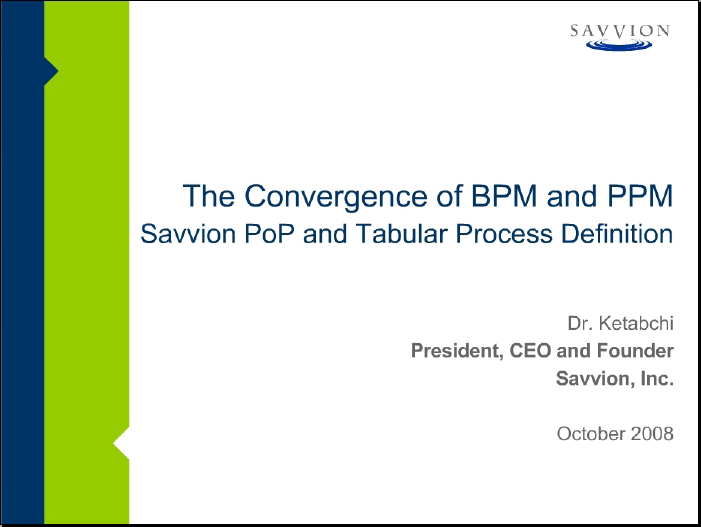
Easy path for Project Managers and Business Process Managers to unify around BPM
The first in a series of Beyond Ordinary BPM Webinars, this session will introduce Project Managers and Business Process Managers to converged community of BPM without making them learn new skill sets. The session will outline a new unified approach to BPM (Business Project Management) and PPM (Project Portfolio Management).
The session will include a demonstration of the Savvion Tabular Process Analysis and Definition tool, which highlights this unified approach.

Business Process Driven SOA using BPMN and BPEL
Modeling business processes for SOA and developing end-to-end IT support for these processes have become top IT priorities for many organisation. The SOA approach is based services and on processes. Processes are focused on composition of services and in that sense services become process activities.
This book – released on August 28, 2008 – will show you how to bridge this gap. It describes a pragmatic approach to business process modeling using the Business Process Modeling Notation (BPMN) and the automatic mapping of BPMN to the Business Process Execution Language (BPEL), which is the de-facto standard for executing business processes in SOA. The book will also cover related technologies such as Business Rules Management and Business Activity Monitoring, which play a pivotal role in achieving closed-loop Business Process Management.
Download the complimentary book chapter below (PDF): “Modeling Business Processes for SOA” and save 15%.
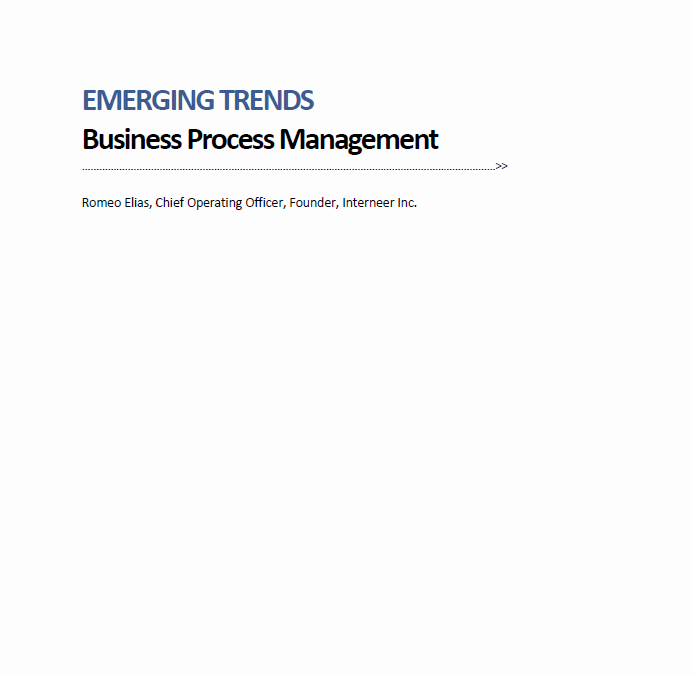
Emerging Trends in Business Process Management
Technology is evolving daily as new tools, applications and use cases are developed and adopted by enterprises and business users. As a result, a new breed of Business Process Management (BPM platforms is emerging, leveraging these technologies and new paradigms. A small number of BPM companies are now offering the solution hosted or as Software as a Service (SaaS). Others are providing an integrated platform, combining all the tools necessary for deploying a BPM solution on one platform.

Define Your BPM Strategy Before Selecting a Tool
With the wide range of available tools on the market today together with the large number of white papers, articles and books on BPM, determining the correct solution for your organization can be daunting. With so much emphasis on the effectiveness of BPM tools for improving productivity, streamlining the value chain and gaining competitive edge, it’s easy to get caught up in all the hype and end up with a much more sophisticated and expensive solution than the business really needs.
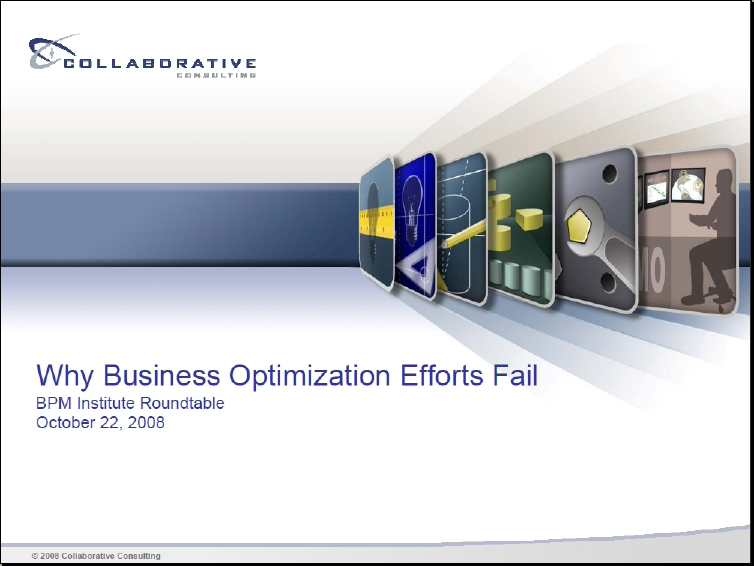
Why Business Optimization Efforts Fail
Many business optimization initiatives struggle in achieving success and up to 70% fail for one key reason – a failure to recognize and manage the impact of the changes on the organization. In this roundtable we discuss why your initiatives may be at risk and what efforts to take to mitigate those risks.
Presenters:
Marilyn Martin, Director Business Architecture Practice, Collaborative Consulting
Ms. Martin is the business architecture practice director for Collaborative Consulting’s national practice. She has over 30 years of experience both in the private sector and consulting, and has created and managed the implementation of business solutions for leading companies in a broad range of industries and product lines. Marilyn has a keen ability to identify the strategic imperatives of the business, design supporting business architecture, and identify and plan the initiatives required to execute.

Without Metrics, Process Improvement Can Be Hazardous to Your Business Health
Imagine yourself as the owner of a business domain within a government agency. Let’s say you’re the Deputy Administrator of entitlement programs in an organization that processes claims for benefits.

Implementing Decisions in Modern Technology
“Bridging the gap between business and technology for true collaboration” has long been the mantra of Business Rule Management Systems (BRMS) and Business Process Management Systems (BPMS). Although this has too often been a strictly technology-based approach, methodologies and approaches have been forwarded in both the rule and process realm. The problem?

Running Effective SOA Proofs of Concept
As I mentioned in the last article, Selling SOA to the Business, it is important to gain buy-in from the stakeholders for your planned SOA initiatives. However, at some stage you will need to expose the business to the technology and demonstrate the specific value it will have to them. In parallel you will also want to get a good handle on what is actually possible to deliver as opposed to the hype you have been fed by the analysts.

Becoming a BDM & BPM Evangelist
So, you have just returned from a great conference where you learned that BPM (business process management and BDM (business decision management) will address many of the issues you face within your company. You now have the proof, from the experiences of other companies, as to how these methodologies can benefit your company. You’re so excited over the opportunity to make real difference in your organization. You share your excitement with a few co-workers but quickly realize that getting upper management to buy into this newfound methodology may be harder than you think.

Dashboard Design
This month’s article provides tips on ways to display information in a way that is content rich. These methods display information in a way that enhances understanding, highlights important elements, and minimizes distractions.
In 1983, Edward Tufte published a remarkable book titled The Visual Display of Quantitative Information1.
